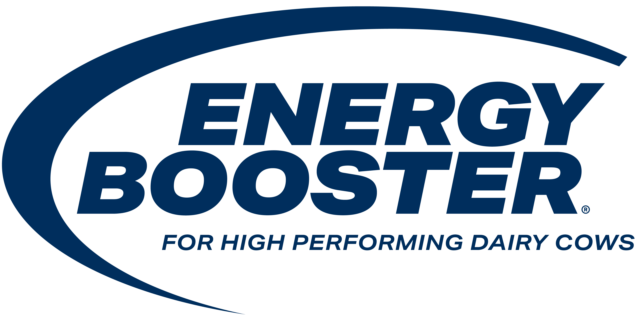The constant increase in prices is associated with the increased demand for oils, the spike in demand for renewable fuels, the difficulty of harvesting palm in southeastern Asia and the four- to fivefold increase in shipping cost.
For example, Figure 1 shows the variation in price of palm fatty acids distillate (PFAD), a common raw material used to manufacture fat supplements. Prices of PFAD raw materials doubled within a year.
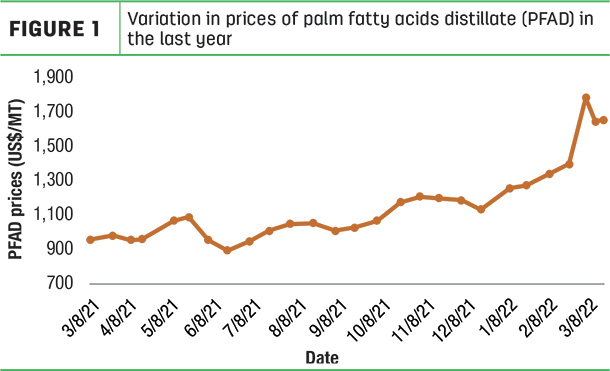
Fat supplements in the feeding program
When we evaluate the importance of supplemental fat in diets, we need to consider the main goal we are trying to achieve when using it. Then, understanding that different fatty acids (FAs) have different metabolic functions and are used differently in the body. To illustrate, Figure 2 represents an overall theoretical partition of FAs when provided in the diet.
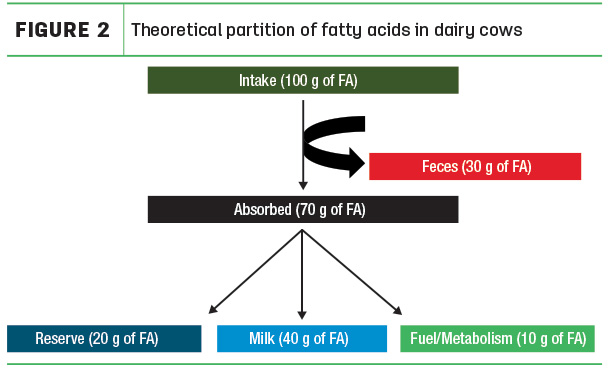
First, it is vital to account for differences in digestibility across supplements. On average, fat supplements have a digestibility of around 70%. However, several factors influence FA digestibility such as the FA profile, degree of purity of a supplement, presence of triglycerides and physical form. The importance of digestibility is being considered in the new NASEM 2021 publication, where 11 coefficients of FA digestibility are assigned to different classes of ingredients/supplements. Then, depending on the FA and the animal’s physiological conditions, FAs can be partitioned to milk (milk yield or milkfat), body reserves or utilized by other tissues as an energy source/structure/metabolic component. Therefore, to value a fat supplement, we need to consider more than the tangible factors we measure daily in the tank.
Feeding for milkfat responses
One of the main reasons nutritionists consider using fat supplements is to improve butterfat. Butterfat prices have been increasing in the last few months at the time of this writing and will likely be over $3 per pound over the next six months. As a result, there is a growing interest in fat supplements that will support milkfat yield. Considerable attention has been given to palmitic acid (C16:0) supplements because of their potential to increase milkfat concentration and yield, and the efficiency of milk production compared with nonfat diets and other options of FA supplements.
The feeding level of C16:0 is important to determine the response to supplemental fat. Most feeding studies were conducted using 1.5% to 2% C16:0 in the diet. However, a few dose-response studies indicated that C16:0 milkfat response is not linear. The results from a trial illustrate the dose-response effect (Table 1).
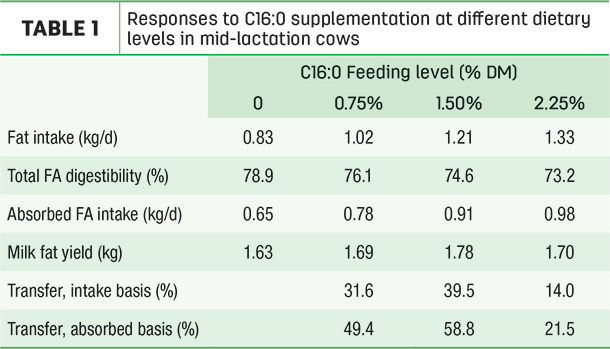
We calculated transfer efficiency (milkfat response/additional supplemental fat) on an intake and digestible basis. Interestingly, transfer efficiency decreases when C16:0 is fed over 1.5% of the diet. Additional C16:0 may be efficiently used at lower levels to drive milkfat synthesis, but at a higher level would cause “substitution” and decrease de novo synthesis. Given the projected fat prices, one should consider feeding C16:0 at 1% of the diet to take advantage of better efficiency.
Additionally, we know that physiological and animal factors influence the response to supplemental fat. Although breed and plane of production affect the response to C16:0, the most critical factor is the lactation stage. Table 2 compares the milkfat response to C16:0 supplementation from three different studies with cows in different stages of lactation but fed similar basal diets.
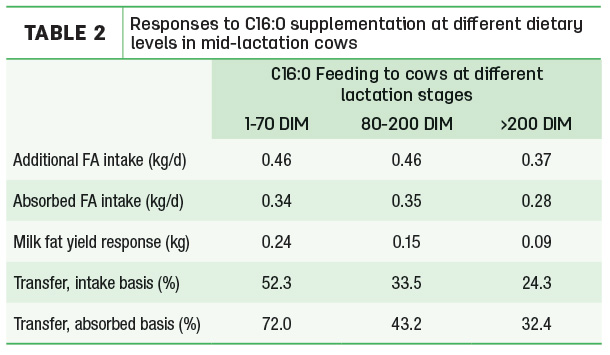
Early-lactation cows are more efficient in using C16:0 for milkfat synthesis than late-lactation cows. Therefore, feeding in early lactation/high-producing pens would generate a more significant milkfat response than in late-lactation/low-producing pens.
Feeding for body condition
In early lactation, a study suggested that feeding a supplement containing primary C16:0 and stearic acids (C18:0) during the immediate postpartum (one to 29 days in milk) favored energy partitioning to body reserves rather than milk yield, especially in a lower-forage diet. The high-forage diet with supplemental FAs increased dry matter intake (DMI) and tended to decrease body condition score (BCS) loss compared with the same diet without FA supplementation. Also, regardless of forage level, feeding supplemental FAs increased DMI, decreased BCS loss but tended to decrease milk yield.
Additionally, in a recent early-lactation study feeding a FA supplement with more C16:0 increased milk yield by 5 pounds per day, energy-corrected milk (ECM) by 11 pounds per day and tended to reduce bodyweight by 33 pounds compared with control. On the other hand, feeding an FA supplement with more oleic acid (60% C16:0 and 30% oleic acid) increased the yield of milk by 5 pounds per day, ECM by 10 pounds per day and did not impact bodyweight compared with control. These results indicated that fresh and early-lactation cows responded favorably to supplemental fat, and that the effects on bodyweight are more beneficial when oleic acid is fed.
Feeding for reproduction
A recent meta-analysis of 17 studies reported a 27% increase in pregnancy rate in the first postpartum artificial insemination (A.I.) when dairy cows were fed fat supplements during the transition period. The inclusion of the very long-chain omega-3 FA EPA and DHA in the form of fish meal, fish oil or algae in the diet has been shown to improve either first-service or overall pregnancy in six studies. Also, a recently conducted study demonstrated that supplementation with calcium (Ca) salts enriched in fish oil-derived FAs starting at 30 days in milk (DIM) improved pregnancy rate compared with Ca salts of palm FAs (52.8% versus 45.5%). Therefore, polyunsaturated long-chain FAs including omega-6 and omega-3 seem to be more effective at improving pregnancy in dairy cows than those containing mainly palmitic and oleic acids.
Take-home message
- Prices of fat supplements will likely continue to increase over the next few months.
- The response to fat supplementation varies according to the physiological status of cows.
- Supplementation with moderate levels of palmitic acid can generate a positive return on investment (ROI) as long as butterfat prices remain high.
- Oleic acid can be used strategically to manage body condition.
- Supplementation with omega FA usually has a positive impact on reproductive performance.

